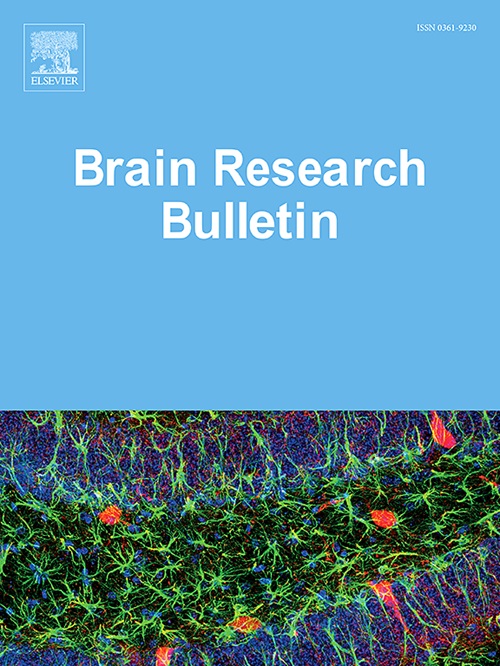Alpha-2 receptor mediates the endogenous antagonistic regulation of itch and pain via descending noradrenaline pathway from the locus coeruleus
IF 3.5
3区 医学
Q2 NEUROSCIENCES
引用次数: 0
Abstract
Pain and itch are sensations that are regulated antagonistically; painful stimulation suppresses itch, while the inhibition of pain enhances itch. However, the central neural circuit underlying this antagonistic regulation remains elusive. The noradrenaline (NA) pathway from the locus coeruleus (LC) to the spinal cord (SC) constitutes an important component of endogenous descending pain inhibitory system. While the pathway of LC:SC has been extensively studied on pain modulation, its role in itch regulation remains poorly understood. We employed behavioral assays for itch and pain, immunofluorescence, electrophysiology, and chemogenetic techniques to investigate the role of noradrenergic (NAergic) neurons of LC (LCNA neurons)and their pathways in modulating itch and pain. Our study has demonstrated that LCNA neurons encode signals for both itch and pain. Inhibition of LCNA neurons had no effect on itch but enhanced pain behaviour. Surprisingly, inhibition of the NAergic projection of LC:SC increased pain and suppressed itch. Furthermore, intrathecal injection of an α2 adrenergic receptor antagonist, but not α1 or β receptor antagonists, produced effects similar to those observed when the LC:SC pathway was inhibited. Our research suggests that the descending NAergic pathway from LC to SC exerts endogenous antagonistic regulation on itch and pain through α2 receptors.
α -2受体通过蓝斑降去甲肾上腺素通路介导瘙痒和疼痛的内源性拮抗调节。
疼痛和瘙痒是拮抗调节的感觉;疼痛刺激会抑制瘙痒,而疼痛的抑制会增强瘙痒。然而,中枢神经回路背后的这种拮抗调节仍然是难以捉摸的。从蓝斑(LC)到脊髓(SC)的去甲肾上腺素(NA)通路是内源性降痛抑制系统的重要组成部分。虽然LC:SC通路在疼痛调节中的作用已被广泛研究,但其在瘙痒调节中的作用仍知之甚少。我们采用瘙痒和疼痛的行为分析、免疫荧光、电生理学和化学发生技术来研究LCNA神经元及其通路在调节瘙痒和疼痛中的作用。我们的研究表明,LC的NAergic神经元(LCNA)编码瘙痒和疼痛的信号。LCNA神经元的抑制对瘙痒没有影响,但增强了疼痛行为。令人惊讶的是,抑制LC:SC的NAergic投射会增加疼痛和抑制瘙痒。此外,鞘内注射α2受体拮抗剂,而不是α1或β受体拮抗剂,产生的效果与LC:SC途径被抑制时的效果相似。我们的研究表明,从LC到SC的下行NAergic通路通过α2受体对瘙痒和疼痛进行内源性拮抗调节。
本文章由计算机程序翻译,如有差异,请以英文原文为准。
求助全文
约1分钟内获得全文
求助全文
来源期刊

Brain Research Bulletin
医学-神经科学
CiteScore
6.90
自引率
2.60%
发文量
253
审稿时长
67 days
期刊介绍:
The Brain Research Bulletin (BRB) aims to publish novel work that advances our knowledge of molecular and cellular mechanisms that underlie neural network properties associated with behavior, cognition and other brain functions during neurodevelopment and in the adult. Although clinical research is out of the Journal''s scope, the BRB also aims to publish translation research that provides insight into biological mechanisms and processes associated with neurodegeneration mechanisms, neurological diseases and neuropsychiatric disorders. The Journal is especially interested in research using novel methodologies, such as optogenetics, multielectrode array recordings and life imaging in wild-type and genetically-modified animal models, with the goal to advance our understanding of how neurons, glia and networks function in vivo.
 求助内容:
求助内容: 应助结果提醒方式:
应助结果提醒方式:


